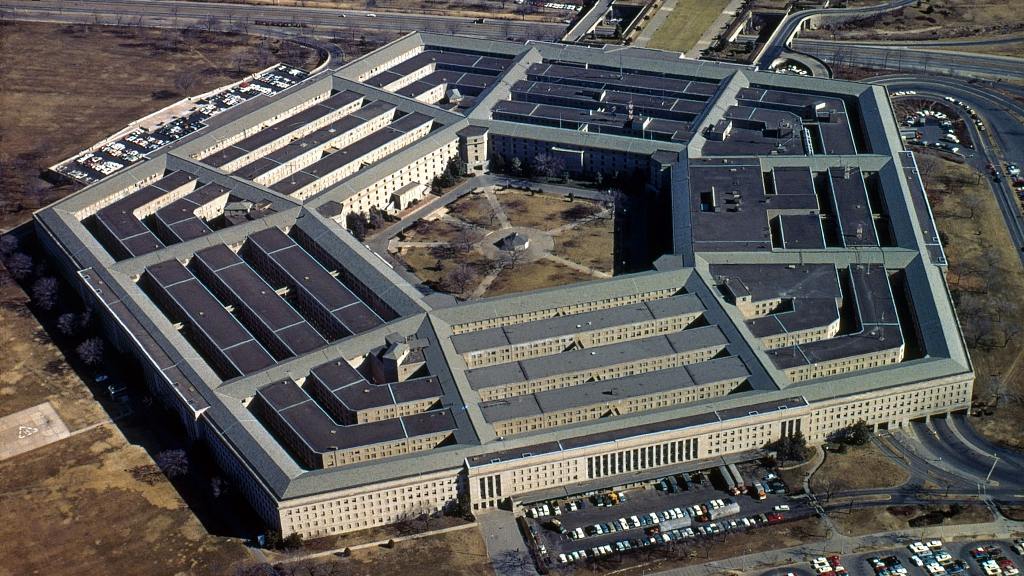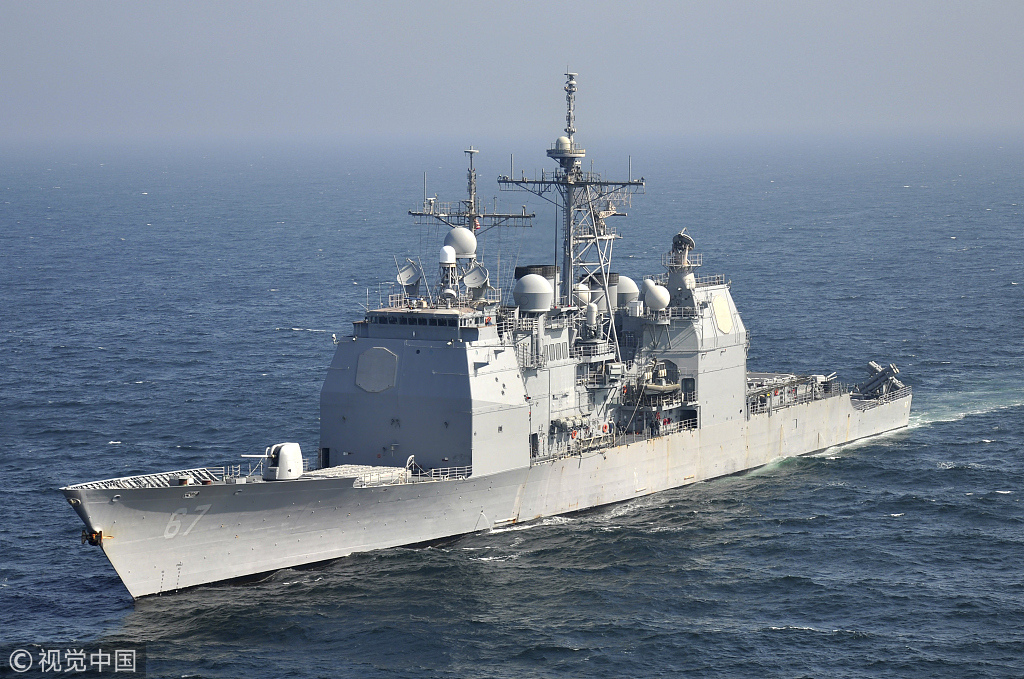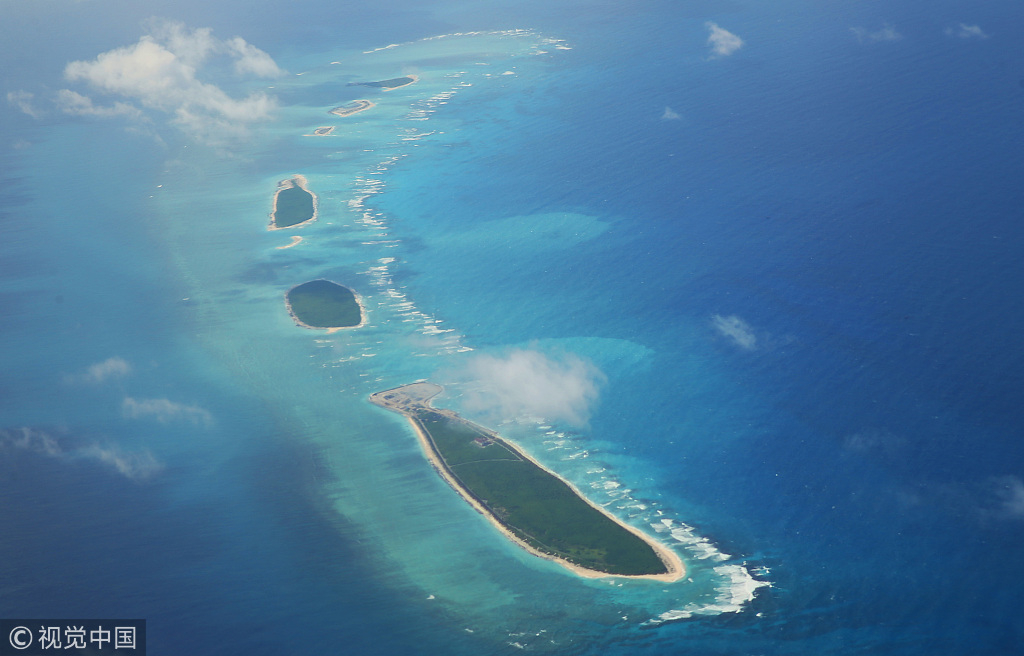
Opinions
15:31, 18-Jan-2019
Opinion: Pentagon's report is just a pop-up advertisement
Li Zheng

Editor's note: Li Zheng is an associate research fellow and director of American Security Center at the Institute of American Studies, China Institutes of Contemporary International Relations (CICIR). The article reflects the author's opinion, and not necessarily the views of CGTN.
On January 15, the Defense Intelligence Agency (DIA), a division of the U.S. Department of Defense, released the Chinese Military Power Report.
Compared to the Annual Chinese Military Report submitted by the Department of Defense to Congress, the Defense Intelligence Agency's report focused more on China's intentions and technical capabilities. The report believed that the Chinese military frequently resulted in increased tensions in surrounding areas, including the East China Sea, the South China Sea, and Chinese Taiwan.
The U.S. media thought that the report reflected the U.S. military's concerns about the rapid rise of China's military power. The Washington Post stated that the DIA report placed a new emphasis on the impacts of China's emerging status as a global military player, which is posing an increasing threat to American military dominance. A senior U.S. intelligence official said the PLA's growing assertiveness could reinforce China's tendency to use military means to resolve regional conflicts.
These inflammatory and scary conclusions are the true intention of the U.S. military to publish this report. According to the preface to the report, this is the second time that the U.S. Department of Defense has issued such reports since September 1981.

The Ticonderoga-class guided-missile cruiser USS Shiloh. /VCG Photo
The Ticonderoga-class guided-missile cruiser USS Shiloh. /VCG Photo
The 1981 report was for the former Soviet Union. To expand the international impacts of the report, the Department of Defense translated the report into eight languages and sent it worldwide. Today, with the spread of the Internet, the U.S. military no longer needs to waste a lot of paper to publish such reports globally.
Some surprising passages in the report were widely distributed through the U.S. media outlets and social media websites, realizing the original intention of the United States to solidify the Chinese threat theory.
Meanwhile, the U.S. Navy's top officer, Chief of Naval Operations Admiral John Richardson, was on a visit in China from January 13-16 to meet his Chinese counterpart Vice Admiral Shen Jinlong and other military leaders. Richardson's visit had the purpose of consolidating the mil-to-mil relations between China and the U.S.. Given the trade disputes between China and the U.S. over the past year, the mil-to-mil relations became more critical for the two countries.
However, the DIA report plays as an annoying pop-up advertisement that has attracted greater attention from the media. This report has many misunderstandings on the development of China's military power, including the following areas:
The report misinterprets the doctrine of China's military strategy. The report believes that the active defense strategy abided by China is an offensive policy at the operational level. Once the opponent overlaps the strategic baseline set by China, China may launch a pre-emptive strike.
This judgment is based entirely on the speculation of the United States and lacks a factual basis. Since the reform and opening-up, China has been one of the most restrained major powers to use military power. China's active defense strategy stems from China's peaceful development path and the insistence on a peaceful rise.

China's Xisha Islands in the South China Sea. /VCG Photo
China's Xisha Islands in the South China Sea. /VCG Photo
On the resolution of regional and international issues, China has always insisted on giving priority to diplomatic channels and the peaceful resolution. This is different from the United States, which had launched numerous pre-emptive military strikes against other countries. Obviously, the US military uses its own thinking and logic to speculate on China's intentions in this report.
The report exaggerated China's military strength. The report believes that China has made rapid progress in nanotechnology, quantum communications, space technology, and artificial intelligence. The report ignores the background of those technologies.
In fact, the world is currently experiencing a new round of technological revolution, and cutting-edge technologies such as artificial intelligence have made rapid progress globally. The progress of China's military technology is not special, and it is not faster. In contrast, the U.S. is more aggressive using cutting-edge technology in military areas. In 2017, the U.S. Department of Defense launched the Project Maven, which used artificial intelligence to assist the drone to identify targets.
The project unlocked the precedent of artificial intelligence applied to the battlefield with enormous safety and ethical risks. China has always opposed the militarization of cyberspace and outer space, and these claims have been intentionally ignored in this report.
The report intends to provoke cross-strait relations, and its political intentions are far greater than its intelligence value. The report focuses on Taiwan and concludes that the mainland will adopt compulsive means to achieve cross-strait reunification.
Coincidentally, two weeks before the report was released, China just held a celebration to the 40th anniversary of the publication of The Message to Compatriots in Taiwan. This report skips the long-term persistence of the mainland for peaceful reunification and attempts to mislead the people in Taiwan.
The 140-page report of the DIA is actually only to promote a simple view that China's military strength threatens the world. Just like selling an unpopular product, the U.S. military must practice such a comprehensive, systematic, and detailed argument to try to convince the public and the world.
(If you want to contribute and have specific expertise, please contact us at opinions@cgtn.com)

SITEMAP
Copyright © 2018 CGTN. Beijing ICP prepared NO.16065310-3
Copyright © 2018 CGTN. Beijing ICP prepared NO.16065310-3